Kerman’s Jameh Mosque: History, Architecture & Visitor Guide
Kerman's Jameh Mosque, with its stunning blue-tiled minarets and intricate brickwork, stands as a timeless symbol of Persian architecture and cultural heritage.
For centuries, Kerman has attracted visitors with its mix of ancient sites and vibrant local life, making it a fascinating destination for travelers interested in Iran’s history and traditions. Among its many architectural wonders, Kerman’s Jameh Mosque, also known as the Friday Mosque of Kerman, holds a prominent place due to its stunning Muzaffarid-era design and enduring role in the community.
This guide will provide an in-depth look at Kerman’s Jameh Mosque, covering its historical background, architectural features, and visitor information to help tourists make the most of their visit. We’ll also highlight nearby attractions that offer a complete experience of Kerman’s historical and cultural landscape, ideal for travelers planning a memorable exploration of this captivating Iranian city.
Historical Background of Kerman’s Jameh Mosque
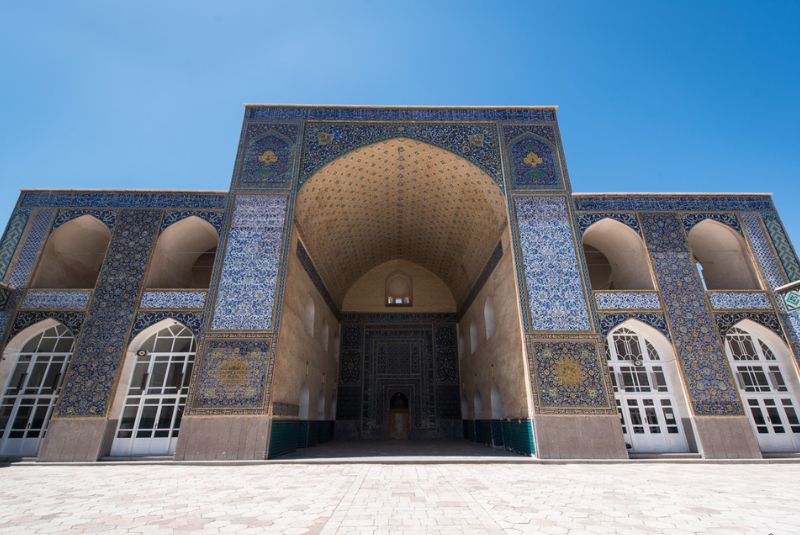
Kerman’s Jameh Mosque traces its origins to the mid-14th century, when it was built under the rule of the Muzaffarid dynasty. The dynasty, which governed parts of Iran during a period of significant cultural flourishing, was known for its architectural contributions, with this mosque being one of the most notable. The construction of the mosque in 1350, initiated by the ruler Amir Mobarez al-Din Mohammad, was part of a broader movement to create public spaces for worship, gathering, and education, reinforcing the city’s role as a religious and cultural center.
The 14th century was a transformative period in Persian history, and the mosque reflects the political and cultural influences of the time. The design shows elements typical of Persian mosque architecture, with a focus on symmetry, elaborate tilework, and calligraphic inscriptions that honor religious themes. The blue and turquoise tiles, along with intricate inscriptions, indicate the Muzaffarid dynasty’s investment in showcasing their rule through grand, expressive public structures.

Historically, the Jameh Mosque has served as both a religious center and a community gathering place. Beyond its primary function as a mosque, it has also been a venue for public events, festivals, and social gatherings, making it integral to daily life in Kerman for centuries. This multi-functional role highlights its importance not only as a place of worship but also as a space where the community has come together for both spiritual and cultural purposes.
Jameh Mosque of Kerman Architectural Highlights

The architecture of Kerman’s Jameh Mosque is both intricate and commanding, embodying the Muzaffarid dynasty's artistic legacy and devotion to Islamic architectural principles.
Exterior Design

The main entrance of Kerman’s Jameh Mosque is an awe-inspiring structure that immediately captures attention. The façade features an elaborate mix of geometric patterns and Arabic calligraphy, crafted in deep blue and turquoise tiles. The inscriptions highlight Quranic verses, carefully selected to complement the aesthetic while conveying spiritual messages. This striking entryway not only serves as a welcoming passage but also sets the tone for the detailed artistry within the mosque.
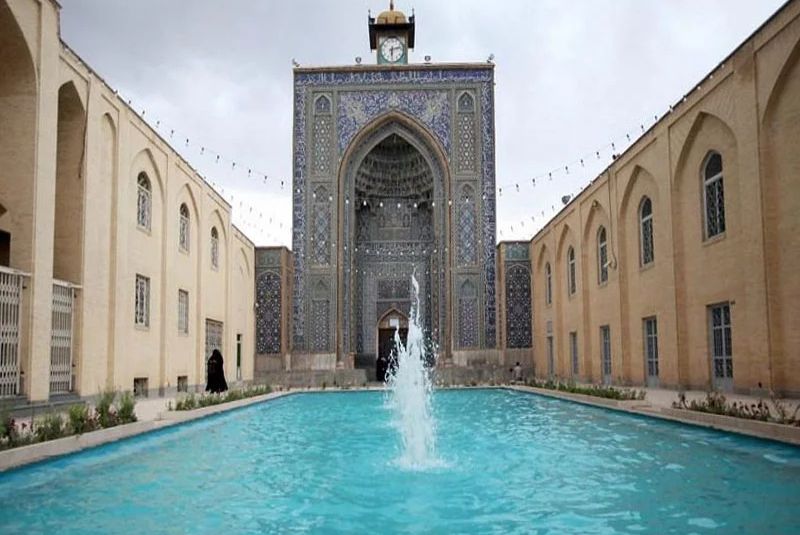
Perhaps the mosque’s most iconic feature is its towering iwan, the grand archway leading into the prayer hall. This iwan is framed by two slender minarets that rise symmetrically on either side, creating a balanced and imposing entrance. The minarets are adorned with tilework and offer a strong vertical contrast to the otherwise horizontal lines of the mosque. This feature is a hallmark of Persian mosque design, and the combination of color, height, and symmetry makes the mosque visually captivating from afar.
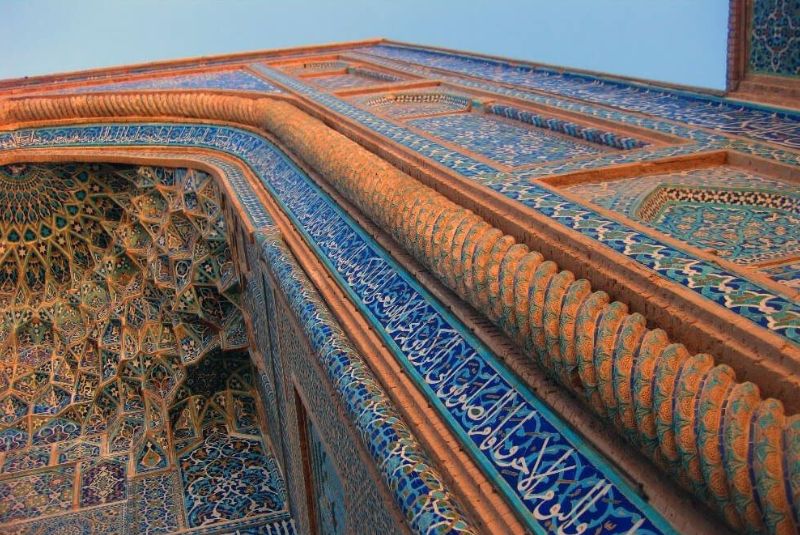
Interior Details
Inside, the central dome covers the main prayer hall, a serene space designed for contemplation and worship. The dome is skillfully constructed to enhance acoustics and natural light, allowing sunlight to filter in through small openings.
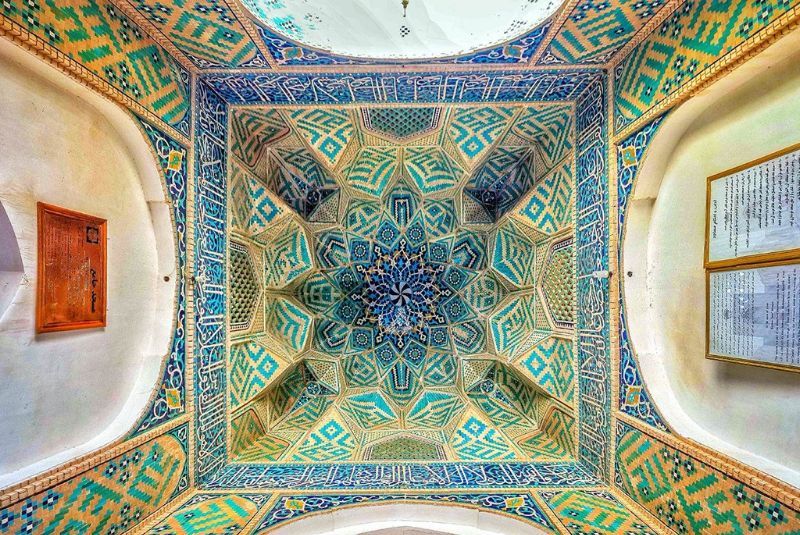
The prayer hall beneath the dome is expansive, providing a sense of openness and community while also being intimate enough for individual reflection.
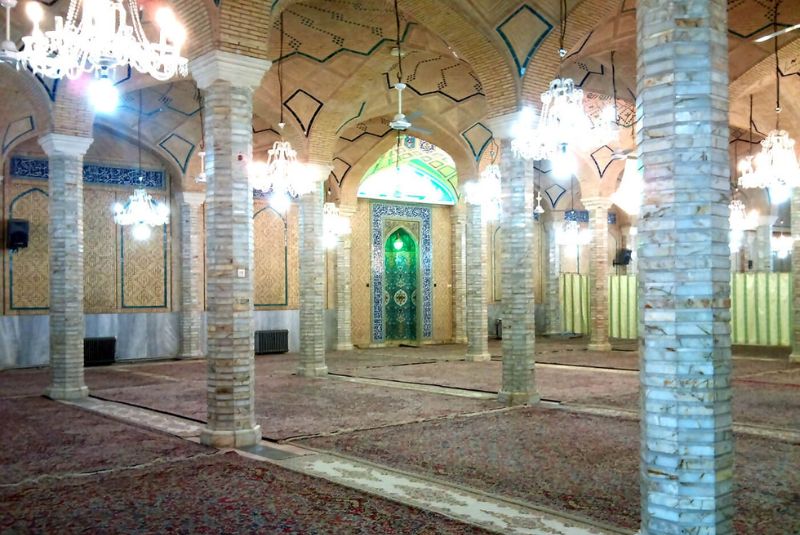
The interior walls and ceilings are adorned with extensive calligraphic panels and a delicate mosaic of blue-and-white tiles. The calligraphy, featuring verses from the Quran, is rendered in a style unique to Persian Islamic art. These inscriptions are carefully arranged to draw the eye upward, encouraging both reverence and admiration for the artistic dedication invested in every inch of the space.
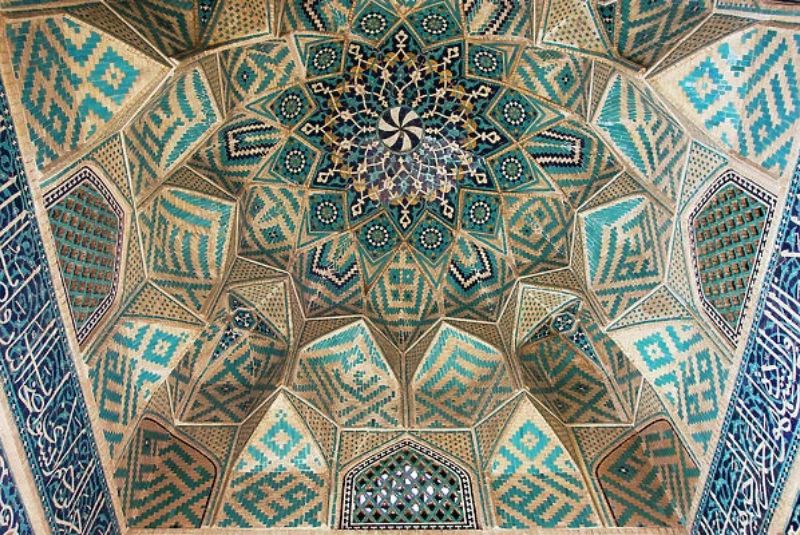
In the heart of the prayer hall stands the mihrab, a small, beautifully decorated niche that indicates the direction of Mecca. Beside it is the minbar, a pulpit used during sermons. Both are crafted with intricate detail, showcasing a blend of floral and geometric designs. These elements, though functional, have been crafted with attention to detail, adding to the mosque's solemn beauty.
Visiting Kerman’s Jameh Mosque
Kerman’s Jameh Mosque is conveniently located in the heart of Kerman, easily accessible from other landmarks and accommodations within the city. Positioned near the city’s historic bazaar, it’s only a short walk from many local guesthouses and hotels, making it ideal for tourists on foot. For those relying on public transport, local buses and taxis regularly service the area, and private tours are also available.
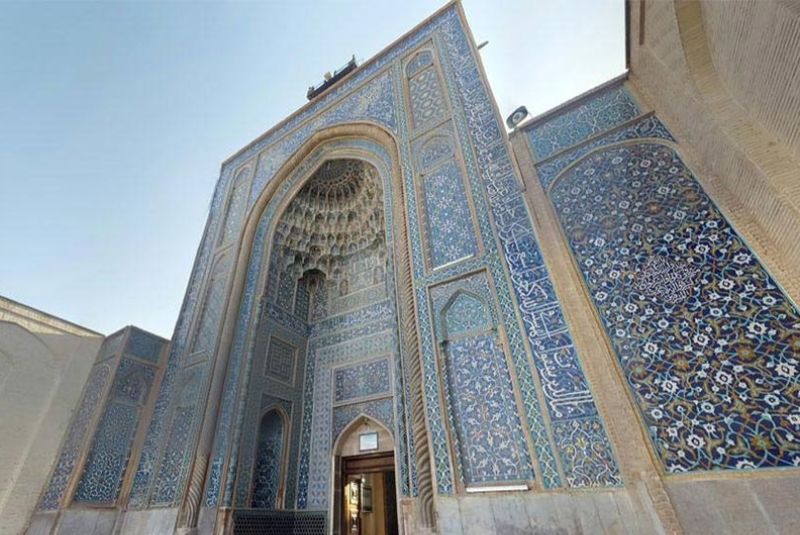
The mosque is open to visitors daily, typically from early morning until early evening, though hours may vary during religious observances. Entry fees are generally minimal, though they may fluctuate for international tourists. Visitors should note that modest attire is required—both men and women should wear clothing that covers shoulders and knees, and women should bring a headscarf.
The ideal time to visit Kerman’s Jameh Mosque is during spring (March to May) and autumn (September to November) when temperatures are milder, allowing visitors to enjoy both the mosque and Kerman’s other outdoor sites comfortably. Early mornings and late afternoons are also recommended for a quieter experience and ideal lighting for photography, which brings out the colors of the mosque’s intricate tilework.
Visitors are encouraged to maintain a respectful demeanor inside the mosque, mindful of its cultural and religious significance. Silence, reverence, and appropriate attire show respect for local customs and provide a more enriching experience, ensuring that all visitors can appreciate the mosque’s unique atmosphere.
The Mosque's Modern-Day Role
Today, Kerman’s Jameh Mosque serves as both an active place of worship and a cultural site of interest, bridging its historical roots with modern-day community life. Primarily, it functions as a religious center, hosting Friday prayers and other important gatherings. Its architectural beauty and historical value also make it a frequented destination for tourists, who come to admire its design and learn about its role in Iranian culture.
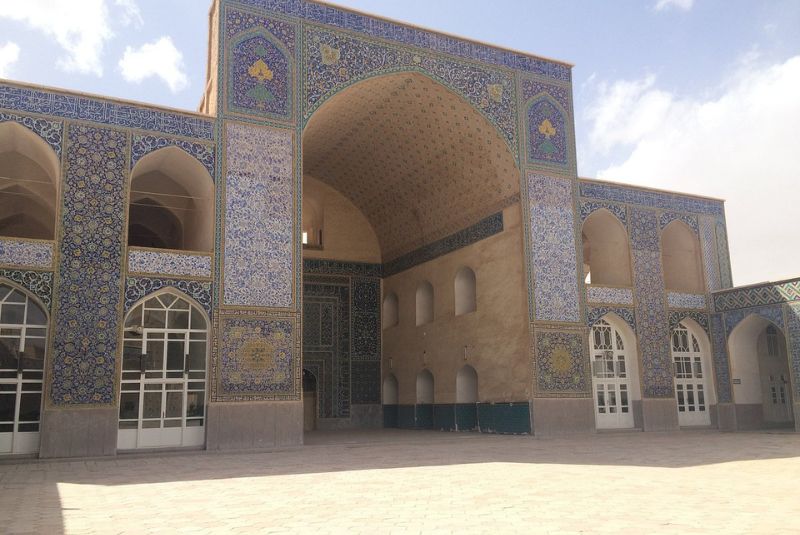
In recent years, efforts have been made to preserve the mosque’s intricate tilework and structural integrity, ensuring that it remains accessible to future generations. Local authorities and heritage organizations have collaborated to protect the mosque from natural wear and environmental damage. Tourism, too, has played a part in supporting these efforts, as visitor interest helps fund maintenance and conservation initiatives.
The mosque occasionally hosts events open to tourists, such as guided tours, exhibitions, and cultural festivities that provide insights into its significance within the community. These programs not only allow for deeper engagement with Iranian culture but also encourage a mutual respect between local residents and visitors, making the mosque a symbol of both faith and cultural connection.
Kerman’s Jameh Mosque Nearby Attractions
Kerman is rich with attractions that complement a visit to its Jameh Mosque, offering tourists a well-rounded experience of the city’s history, culture, and natural beauty. Here are several must-visit sites located near the mosque:
Ganjali Khan Complex
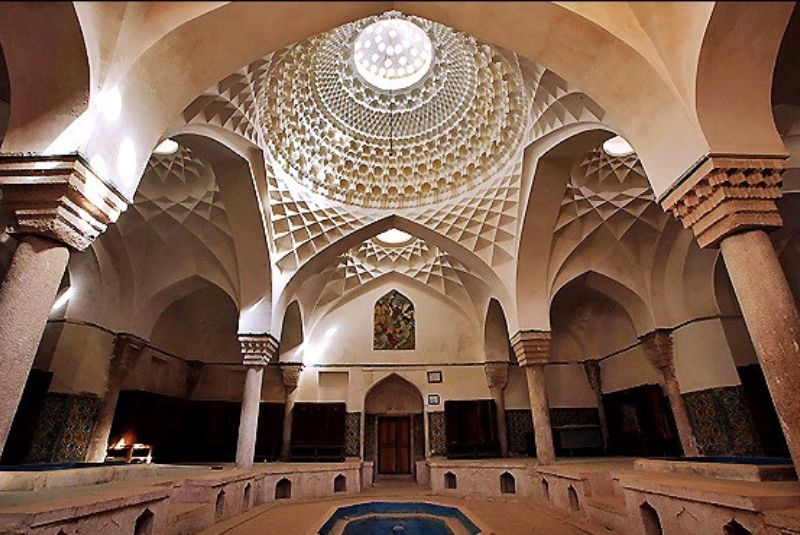
This historical complex, built in the Safavid era, includes a bazaar, bathhouse, mosque, and caravanserai. The bathhouse, now a museum, features detailed tilework and life-sized wax figures depicting traditional Persian scenes. Visitors can explore each part of the complex and experience the layout of an ancient Iranian urban center.
Kerman Bazaar (Bazaar-e Sartasari)
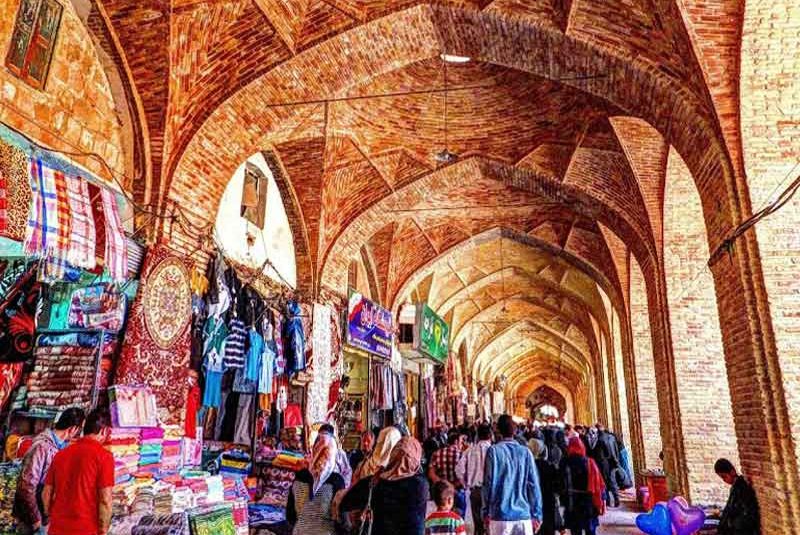
One of the oldest bazaars in Iran, this bustling market is known for its Persian carpets, spices, and handicrafts, making it a vibrant spot to observe local life. Visitors can find unique souvenirs, sample local foods, and interact with artisans and vendors in this historic commercial hub.
Shazdeh Garden (Bagh-e Shazdeh)
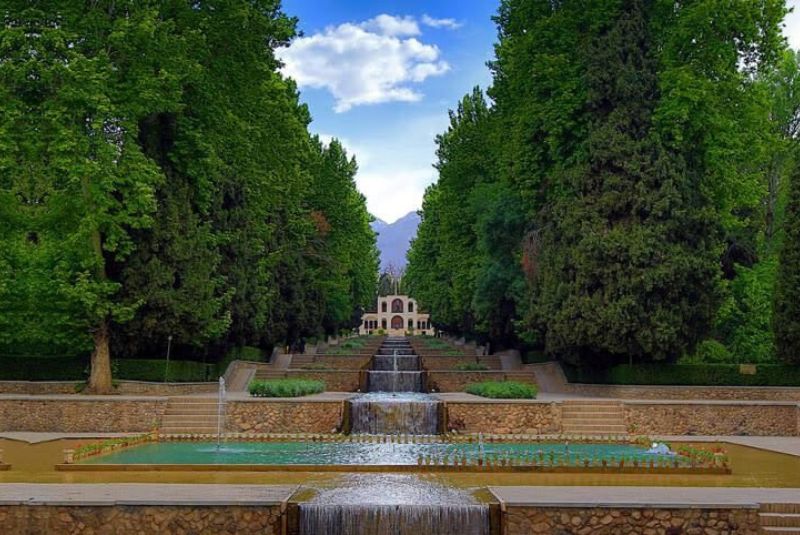
Located a short drive from Kerman, this UNESCO-listed garden is an impressive oasis in the desert. Its symmetrical layout, fountains, and lush greenery offer a peaceful retreat from the arid landscape. The garden’s beauty peaks at sunset, providing a stunning contrast to its surroundings.
Jabalieh Dome (Gonbad-e Jabalieh)
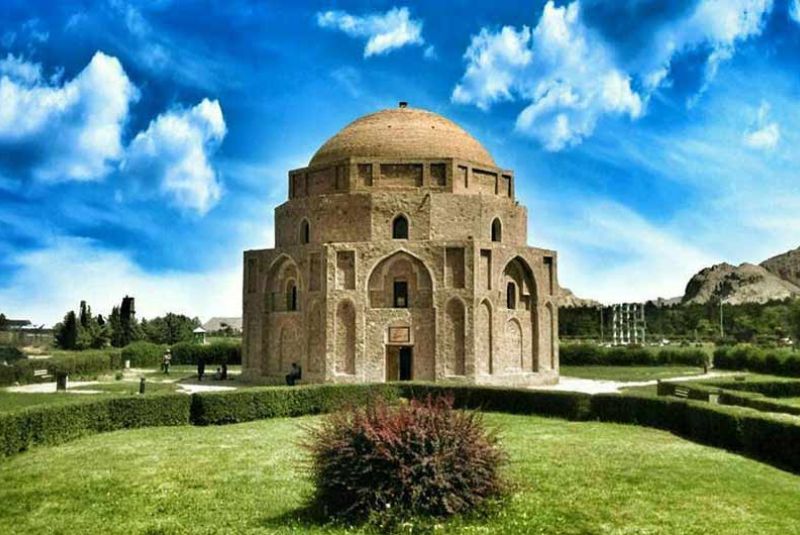
This octagonal stone structure is unique for its unusual design and ancient origins, likely dating to the pre-Islamic Sassanid period. The dome is a popular site for those interested in early Persian architecture, with expansive views of the city and surrounding mountains.
Rayen Castle
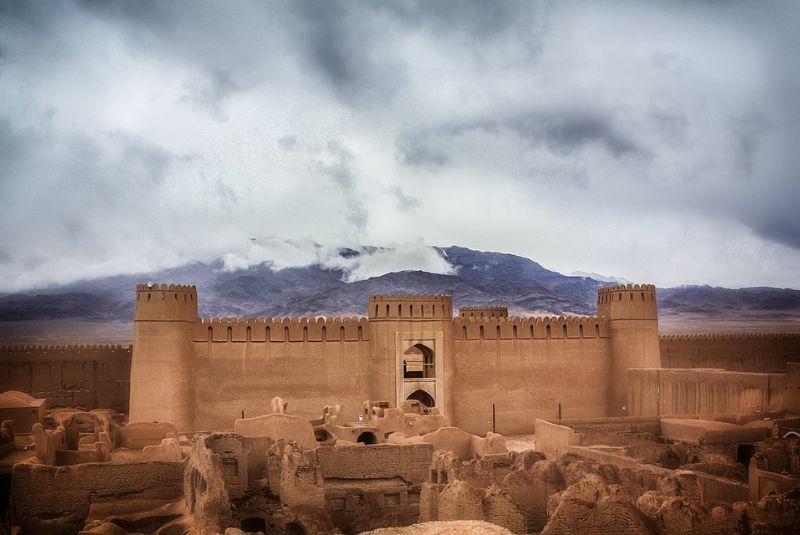
This adobe castle, located near Kerman, is an excellent example of Persian mud-brick architecture and is often compared to the more famous Bam Citadel. Well-preserved, the castle offers a look at Iran’s ancient fortifications and is a testament to the architectural resilience of past civilizations.
Mahan
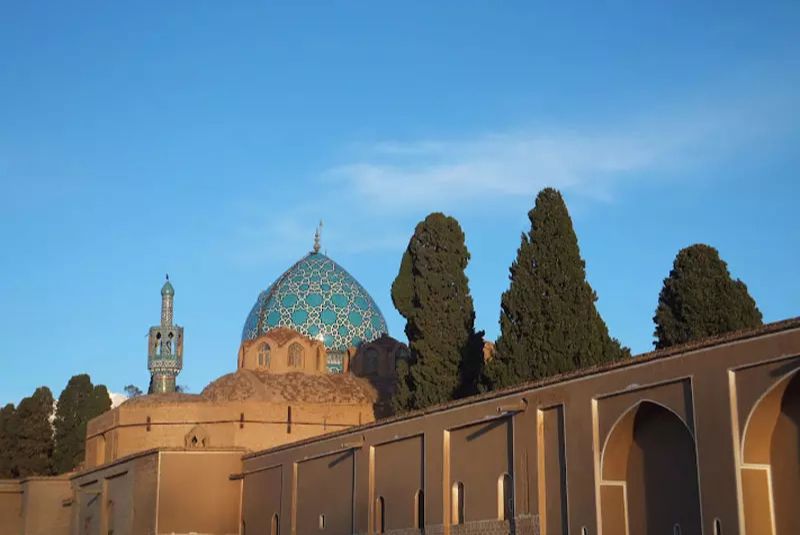
A nearby town known for its spiritual significance, Mahan houses the Mausoleum of Shah Nematollah Vali, a revered Sufi figure, and the Prince’s Garden (Bagh-e Shazdeh). Visitors come for the peaceful ambiance and the lush gardens, both of which offer a quiet space for reflection and are excellent for those with an interest in Sufi culture and Persian landscape design.
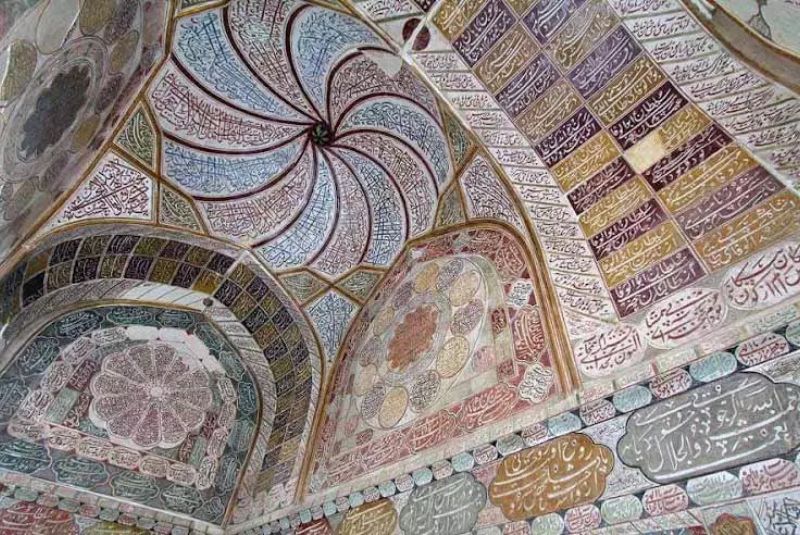
Travel Tips and Additional Recommendations
For travelers aiming to experience Kerman’s Jameh Mosque and its surroundings fully, a few exploration options can enhance the visit. Local tour guides offer insights into the history and architecture of the mosque, and joining a walking tour is a great way to immerse yourself in the culture, particularly around Kerman’s bustling bazaar. Renting a car is another convenient choice, especially for those planning to visit the outlying attractions like Rayen Castle and Shazdeh Garden.
While Kerman is generally safe for tourists, practicing common travel precautions is advised. At religious sites, modest dress and quiet, respectful behavior are essential. Photography is usually allowed, but it’s polite to ask permission when photographing people, especially in sacred areas.
For accommodations, hotels such as the Pars Hotel and Akhavan Hotel provide comfortable stays close to major landmarks. When it comes to dining, local spots like Sharzeh Restaurant and Vakil Traditional Tea House offer delicious Persian dishes and a chance to unwind after a day of sightseeing.
Final Takeaway
Kerman’s Jameh Mosque is a compelling destination for anyone visiting Iran, combining exquisite architecture with centuries of history and cultural depth.
A visit to Kerman’s Jameh Mosque promises not only beautiful architecture but also a sense of connection to Iran’s past and present.
For those seeking an authentic experience of Iranian culture, Kerman and its Jameh Mosque provide an enriching journey through art, tradition, and history—an experience not to be missed.
Share your story!
Comment below and let us know about your Experience.
Your story inspires others!


Comment
Leave a Comment